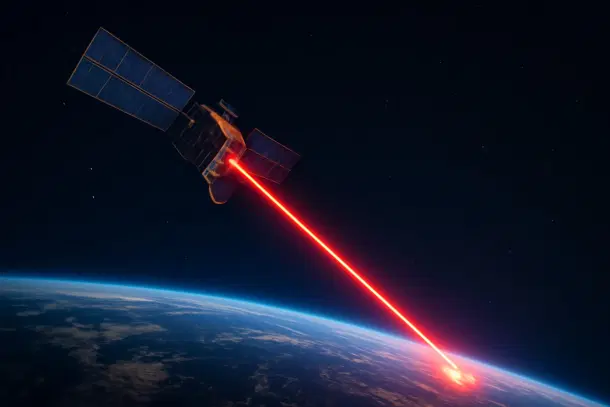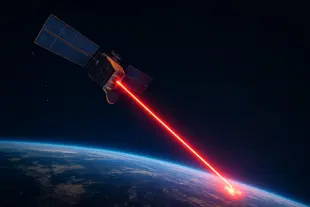News Brief
China's Breakthrough In Large Crystal Development Paves Way For Ground-Based Laser Weapons Capable of Targeting Satellites—All About It
Swarajya Staff
Jul 25, 2025, 02:56 PM | Updated 02:58 PM IST
Save & read from anywhere!
Bookmark stories for easy access on any device or the Swarajya app.


Chinese researchers have successfully developed the world’s largest barium gallium selenide (BGSe) crystal, a breakthrough that could fuel the development of ultra-high-power laser weapons.
The newly manufactured BGSe crystal, measuring 60 millimeters in diameter, is capable of converting short-wave infrared lasers into mid- to far-infrared beams, South China Morning Post reported.
This innovation allows the laser to penetrate atmospheric windows, making it ideal for long-distance transmission.
The potential applications of this breakthrough stretch far beyond the battlefield, offering an advanced platform for high-powered laser systems that could target satellites from the ground.
The timing of this development coincides with China's growing focus on directed-energy weapons, fueled by increasing concerns in Beijing over the role of military satellite networks like Starlink, particularly in the ongoing conflict in Ukraine and its potential role in supporting Taiwan during a contingency.
This innovation is also seen as part of a broader effort by China to gain superiority in space and missile defense systems.
Alongside military applications, these ultra-large BGSe crystals show promising potential for civilian use.
They could enhance medical diagnostics and hypersensitive infrared systems that are crucial for missile tracking and aircraft identification.
According to the researchers, the synthetic crystals are structurally intact, free from cracks, and optically transparent, making them exceptionally efficient in their intended applications.
Wu Haixin, the leading scientist of the project at the Hefei Institutes of Physical Science, Chinese Academy of Sciences, and his team detailed the extraordinary methods behind the creation of the crystal in a peer-reviewed paper published in June by the Chinese-language Journal of Synthetic Crystals.
The manufacturing process involves intricate material preparation, where ultra-pure barium, gallium, and selenium are vacuum-sealed in quartz tubes and subjected to zone refining in dual-zone furnaces at 1,020 degree Celsius.
Over the course of a month, the crystals grow as the tubes descend into cooler zones, a highly sensitive process that demands flawless execution.
Subsequent treatments include days of holding the crystals at 500 degree celsius and cooling them at precisely controlled rates to eliminate defects.
This achievement is particularly remarkable considering the material’s resistance to damage from intense laser power.
BGSe can withstand laser intensities up to 550 megawatts per square centimeter, which is far beyond the capacity of current military-grade crystals.
The unique properties of BGSe could make it a game-changer in both defence and research applications, with the laser frequency converter resulting from this development dwarfing traditional optics.
BGSe's potential for long-range laser weapons is significant, especially given the past challenges faced by nations like the United States. In 1997, the US Navy’s MIRACL laser system suffered self-damage while attempting to target a satellite, highlighting the inherent difficulties in scaling up laser systems for military use.
With this advancement, China is trying to position itself to deploy laser systems that can target satellites and other high-value assets, marking a significant step forward in both military and space technologies.





